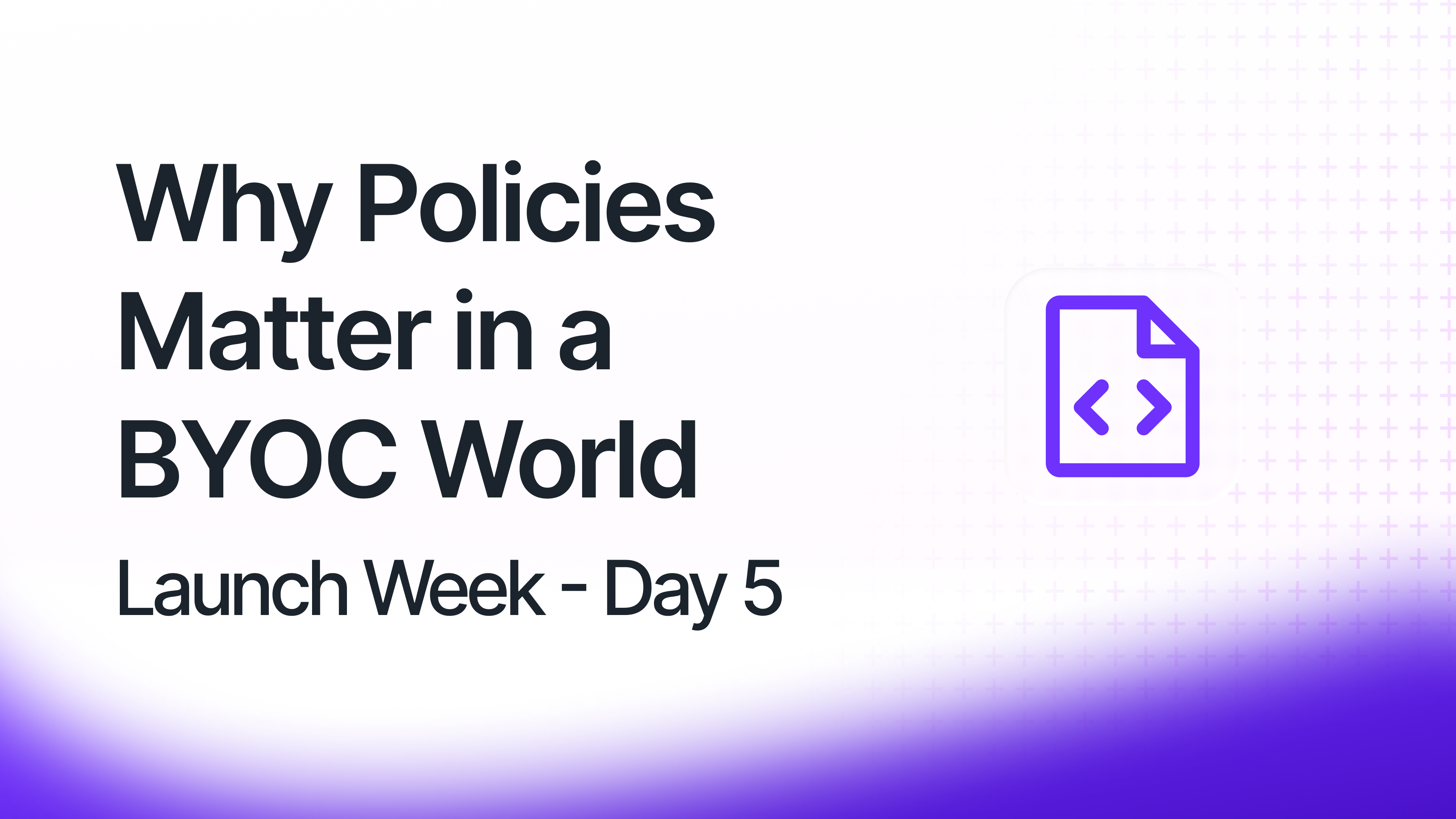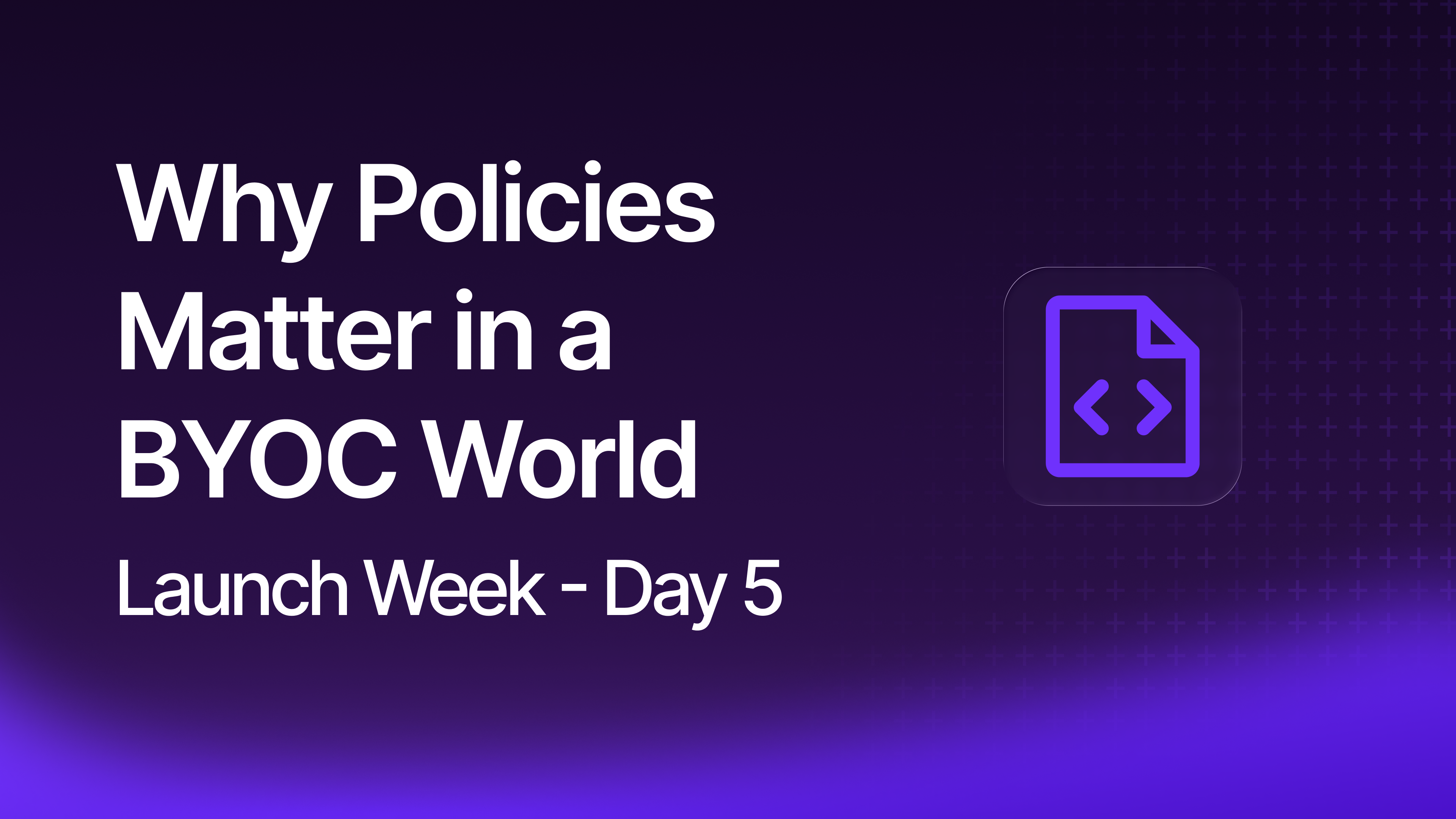Why Policies Matter in a BYOC World
And why we're building something new

Harsh Thakur
Engineer


Cloud infrastructure today looks nothing like it did a few years ago. Teams are moving faster, deploying across dozens of customer-owned environments, and navigating a maze of compliance, security, and operational constraints. In this new BYOC (Bring Your Own Cloud) model, the importance of predictable, verifiable, automated guardrails has skyrocketed.
We’ve been living through this shift alongside our users. Soon, we’ll be releasing a solution to this problem that we’re really excited about. For now, let’s talk about the “why.”
ICYMI: Check out all of our latest Launch Week Blogs: Day 1 Change Controls, Day 2 Approvals, Day 3 Drift Detection, Day 4 Break Glass.
RBAC Isn’t Enough: Policies Fill the Critical Gap
Roles and permissions are fundamentally about who can perform an action.However, modern infrastructure problems are increasingly about what actions should be allowed at all.
RBAC (role-based access control) can tell you:
- who can run terraform apply
- who can patch a deployment
- who can push a chart
…but it can’t tell you whether that change is safe, compliant, cost-efficient, or aligns with your operational standards.
That’s where policies come in. Policies express organizational intent:
- "No public buckets."
- "No databases without encryption at rest."
- "No workloads without explicit CPU/memory limits."
- “Only approved images can run inside customer environments.”
Every company already has these rules, but they’re scattered across Slack, Notion, institutional knowledge, and post mortems. Policy systems make them enforceable.
Regulations Are Moving Toward BYOC — Policies Are the Practical Backbone
Data residency, sovereignty, and compliance frameworks (GDPR, HIPAA, ISO, India’s DPDP, EU/US trajectory, etc.) are pushing companies to run sensitive workloads inside their own cloud accounts rather than in their software vendors’ multi-tenant environments.
That means:
- Vendors operate software in customer clouds.
- Customers stay accountable for compliance.
- Both parties need to ensure nothing violates regulations.
Policies become the most lightweight and pragmatic method to ensure this happens consistently. They act as a contract, with simple rules that protect both sides.
Vendor Perspective: Packaging Software That Behaves the Same Everywhere
If you're shipping software into 10, 50, or 500 customer cloud environments, your biggest enemy is inconsistency.
You want every deployment to follow the same rules, every time:
- Network access is safe.
- Infrastructure is hardened.
- Resources follow the same naming, labeling, and scaling patterns.
- Your app behaves predictably regardless of customer cloud quirks.
Policies allow vendors not only to aspire to follow best practices but operationalize their goals-
“No one — not even us — should ever deploy a misconfigured component.”
This reduces support burden, eliminates “unknown unknowns,” and makes operating your software at scale dramatically easier.
Customer Perspective: Trust the Vendor… But Verify Everything
The customer owns the cloud. They own the compliance requirements. They own the audits.
So they need:
- confidence that vendors aren’t introducing violations.
- visibility into what’s being deployed.
- the ability to enforce their own security and infrastructure constraints.
- a way to verify compliance without manually reviewing every diff.
Customers trust vendors — but they need the ability to verify.
Policies create that verification layer. They ensure everything running inside a customer cloud follows customer-defined infrastructure rules, not vendor assumptions.
The Best Time to Enforce Policies? Before the Change Ever Lands
There’s no better moment to catch a bad infra change than the plan/diff/dry-run phase:
- terraform plan
- helm diff
- kubectl apply --dry-run=server
This is where developers understand intent.
This is where unsafe changes can be blocked.
This is where you want the feedback:
“This violates policy. Here’s why.”
It’s the perfect feedback loop: fast, contextual, and safe.
Continuous Compliance and Drift: Policies Don’t Stop at the Plan
Cloud infra drifts, it’s inevitable.
Console edits, emergency patches, vendor agents, day-2 operations — something eventually deviates from code.
Pairing policies with drift detection creates a powerful model:
- Detect changes that weren’t planned.
- Detect violations introduced outside CI/CD.
- Get periodic compliance reports.
- Maintain long-term assurances inside each customer cloud.
This is how organizations achieve not just best-effort compliance, but truly continuous compliance.
Because we’ve been building something in this space.
Something that:
- sits inside the BYOC model
- works during plan/diff
- ties into drift
- helps vendors ship safely
- gives customers real control
- and is designed around how teams actually manage infra today
Here’s a Kube manifest in the plan phase:
We’re not announcing the full feature yet — but this is the philosophy behind it. If this resonates with your team, your vendor model, or your compliance realities… The next thing we launch might be for you. Stay tuned!